A New Year’s Resolution
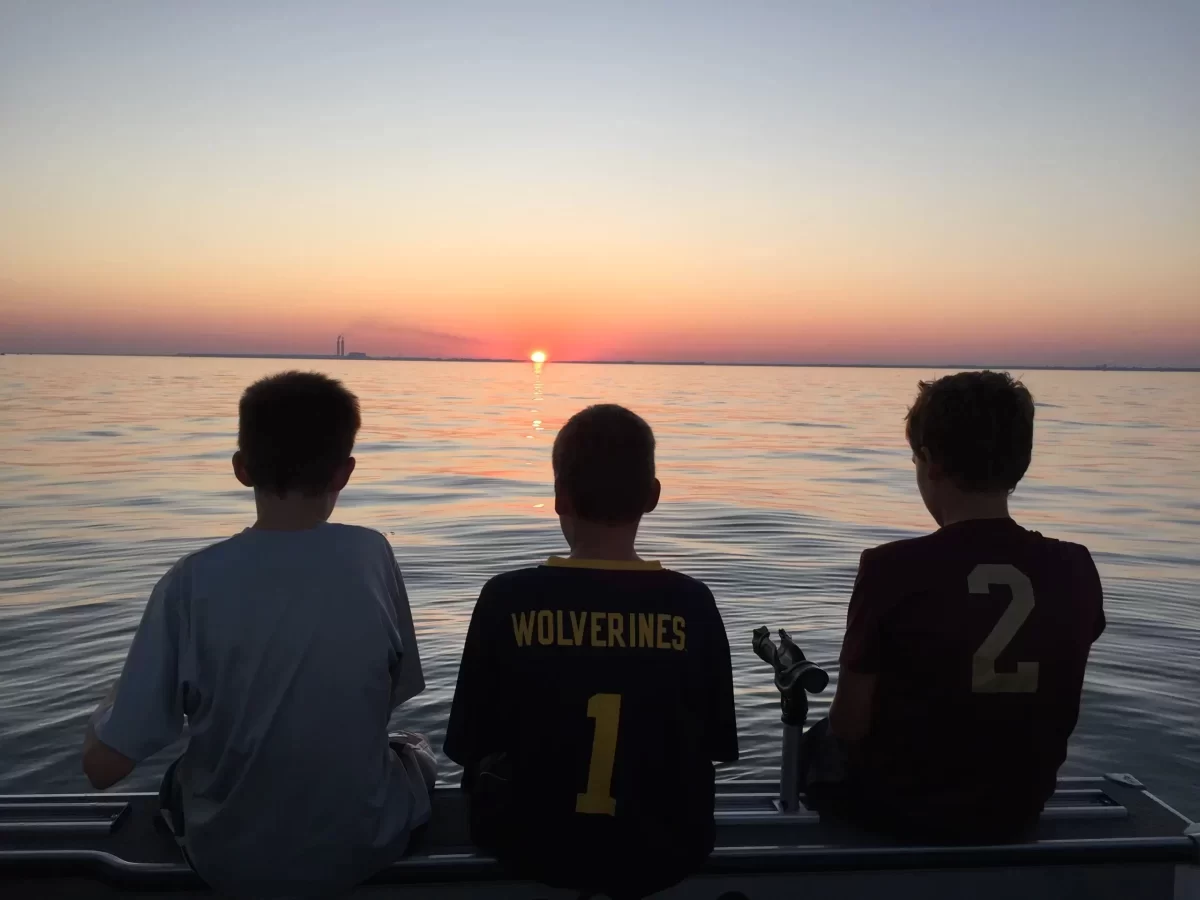
* This page contains affiliate links. The Great Lakes Fisherman may earn a commission on items purchased through these links. For more on this, please click here.
It’s that time of year when we all take time to reflect on our lives. We take inventory of where we stand and try to find something that we can change in the new year to improve our lives or the lives of others. And if you are still looking for one, we have a great New Year’s resolution for fishermen: Take a
kid fishing! Here, we make the case for why this is so critically important for the future of the outdoors.
The Importance of Conservation
Why is conservation so important to us? What a dumb question, right? The answers seem obvious: clean natural resources, maintaining healthy wildlife populations, keeping plenty of public land available for the outdoors person. But lying just under the surface of all of this is the foundation, the basis, of our strong desire for conservation – the unmatched life experiences that the outdoors provide for us and our families.
We have all had those moments in the outdoors, striking impressions from nature that come in the moments when we least expect them. These impressions usually come to us when our minds and bodies are at ease, and we are immersed in the distinct senses of nature along with the people in our lives that make us the happiest. It is a high that is almost indescribable to those who have never experienced it.
It might be a foggy morning on Lake Michigan, which could be mistaken for an endless plate of glass, waiting for the first salmon reel to sing. It might be that crisp, sunny October morning in the poplars with only the sound of dew dripping from the tress, searching for the first grouse flush of the day. Maybe it’s the anticipation we feel sitting inside an old, musty-smelling deer blind as light breaks on opening day.
Regardless of how or when they hit us, these experiences change our lives forever. We begin to spend endless hours looking for the next one or trying to re-live one prior. The experience can be so intense, that they drive many of us on a life-long quest to recreate these moments for our children and our grandchildren. This is known as legacy and to ensure that it is here for subsequent generations, we must have conservation.
The Modern Threat to Conservation
In the early parts of the 20th century, threats to conservation were becoming obvious. The effects of over hunting and fishing and unregulated pollution from the industrial revolution were glaring. By the time I was a child, growing up in the 1980’s, many laws had already been enacted to protect wildlife populations and clean up the environment. These newer laws would take time to work, however. Even then, I can still remember the distinct smell of the Detroit River throughout most of my childhood years. You always knew when you were within a mile or so of the river because of that odor. In addition, a lure dropped into the water was only visible for a foot or so below the surface. This was a clear indication of just how much was being dumped into the river at that time. Today, that smell is long gone and the water clarity has improved significantly. These are both the signs of an improved ecosystem and a conservation success story.
However, these threats are being replaced by another threat to conservation that is equally concerning – a lack of participation and support. In 2022, the forms of enjoyment that children seek are very different from what they were 40 years ago. Far fewer young people are venturing into the outdoors. Cell phones, video games, and TikTok are threatening future support for conservation and the outdoors. Children are not as exposed to the joys of nature as they once were. This makes them much less likely to get involved with the outdoors as adults. Now more than ever, it is important to expose young people to these experiences.
What Can We Do?
So, what can we do to help ensure the future of conservation? Obviously, financial support is always needed and welcome. But there is another, even more important way of providing support to conservation that is free: Introducing a young person to the outdoors.
It seems cliché, but simply getting a kid out there is the most important step. If you feel like you are not a good enough fisherman or hunter to take a kid along, you are missing the point! The value is in the experience. Success is just icing on the cake. While it helps if the fish are biting or the deer are moving, the experience itself is eye-opening for those who haven’t been out there before.
On more than one occasion, I have introduced kids to fishing only to come back empty-handed and feeling like I had completely failed them. After all, I know how disappointing it feels to come home with an empty live well after a long day on the water. But to my surprise, not only did they have a great time, but in every case, they couldn’t wait to go again! And this brings
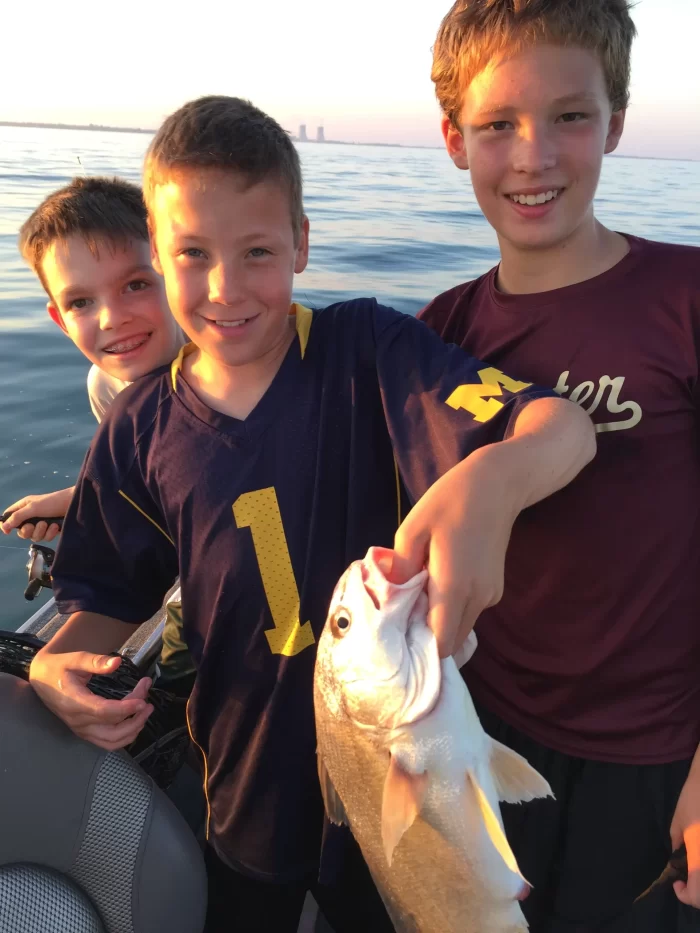
us full-circle back to one of the very reasons for conservation – the unmatched life experiences.
A New Year’s Resolution
To help ensure that our outdoors legacy continues, I have a New Year’s resolution for you. While you are sitting in your easy chair with a glass of eggnog this holiday season, planning your favorite outdoor activity in 2023, include a young person in those plans. It can be anything from bluegill fishing to trolling for salmon, from shooting trap to hunting deer. The enjoyment is inherent in the activity. There is nothing better your can do to help ensure the legacy of the outdoors for future generations.
By introducing a kid to the outdoors, you really are lending support to conservation by growing the support base. In addition, you will make some of the best memories for your kids and their friends. What else can provide so much impact to your cause by simply doing what you love with others?
Gifts For Ice Fishermen
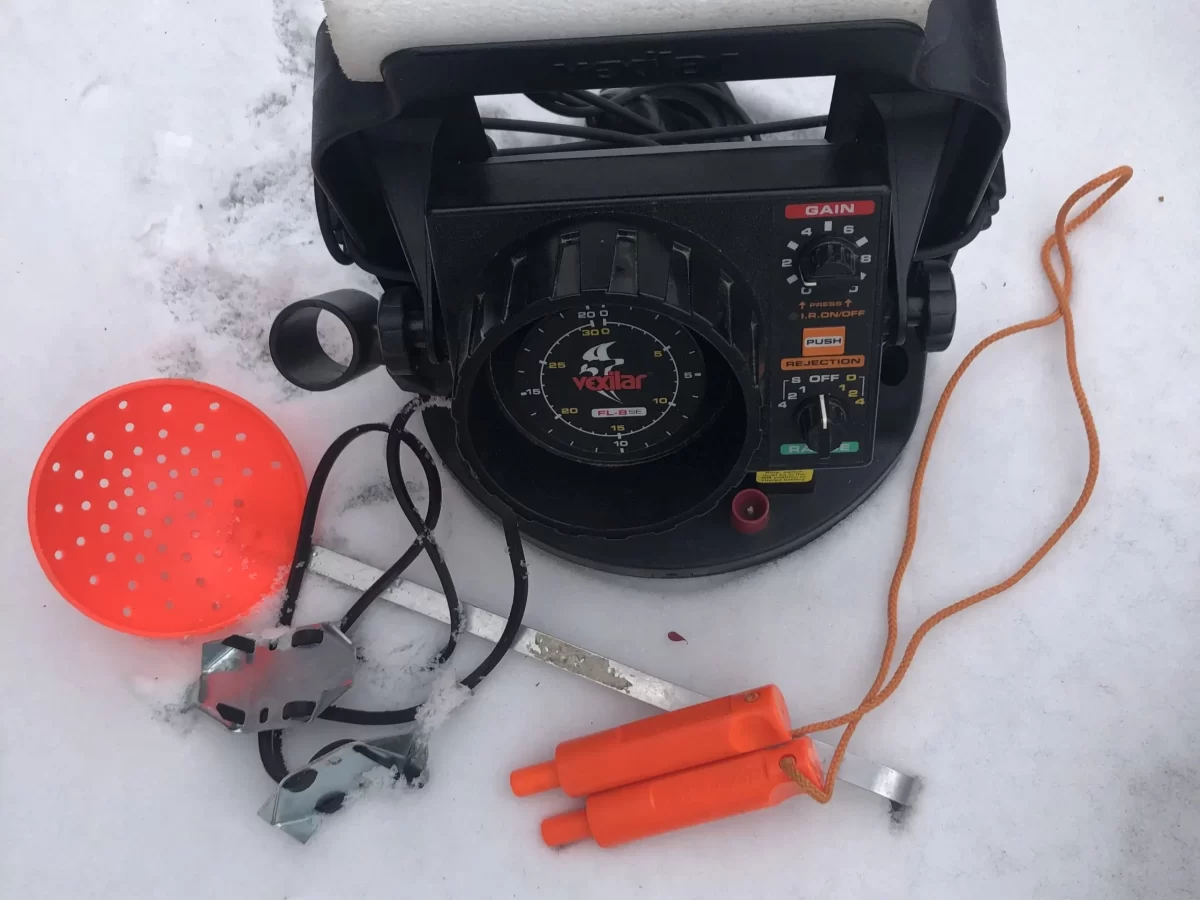
* This page contains affiliate links. The Great Lakes Fisherman may earn a commission on items purchased through these links. For more on this, please click here.
Looking for something for the ice fisherman in your life? Check out these top gifts for ice fishermen in your price range!
$0-$100 Price Range
At a time of year when minnows can be hard to come by, these make a great alternative, adding scent and a bright flash of color to catch a fish’s eye.
Mr. Crappie MC6HV Mega Spool Line, 6-Pound, 1500-Yard, Hi-Viz
Those who ice fishing know how light the bit can be. Often it is nearly undetectable on the rod. This is where high-vis line comes in handy. The slightest twitch in this line is easy to see, allowing you to detect bites that would previously have gone unnoticed.
Piscifun ICX II Ice Fishing Reel
A great buy for the money, this ice fishing reel will pair well with the rod below and is a great all-around options for fisherman who like to catch a variety of fish species.
Ice awls are a critical piece of safety equipment for ice fisherman, allowing one to pull one’s self out of the water in the event of a break-though. Simply throw them around the neck before walking out onto the ice to help ensure you can get out should an emergency arise.
Those who have tried, know that walking on smooth or wet ice can be nearly impossible. These cleats are a best seller on Amazon and come at a great price.
Tip-ups are a great way to increase your ice coverage and thus, your catch. This basic pair of foldable tip-ups are great for larger gamefish, such as walleye or pike. They setup in seconds and fold up for convenient storage.
This is a standard for serious ice fisherman. This heater takes portable propane bottles and provides hours of heat from a single bottle. Pair with an insulated shanty, take off your coat and enjoy ice fishing like never before!
Engel ENGLBC7-N 7.5qt Live Bait Cooler with 2nd Generation 2X2 Portable Aerator Pump
This item is a godsend for those who frequently use live minnows. This cooler comes with its own air pump to keep your minnows alive all day without worry. The pump can be operated with batteries. This 7.5 qt model is perfect for ice fishing!
St. Croix Rods Legend Black Ice Fishing Rod
This 24″ light action rod is the perfect choice for panfish. This rod, made by St. Croix, comes with it’s own built-in strike indicator. St. Croix is a legend in the rod-building industry so you can purchase with confidence.
Strikemaster Ice Fishing Mora Hand Auger
Price at Listing: $86.57
This manual ice auger is a great economical choice for those weekend ice anglers who only drill a few holes each time out and typically fish on ice that is less than 1′ in thickness.
$100-$500 Price Range
StrikeMaster Lite-Flite Lazer Drill Unit 6″
A great choice with a modern cordless drill with a 1/2″ chuck. These augers take the manual labor and gas fumes out of drilling holes. This lightweight item also removes unnecessary weight of a gas auger from your sled, making it easier to pull your equipment on the ice. A true win-win for any ice fisherman! (Drill is not included)
Eskimo Quickfish 3 Pop-Up Portable Hub-Style Ice Fishing Shelter
Fishing shanties make a huge difference when it comes to comfort on the ice. It doesn’t take much wind in the winter to make being outside very uncomfortable. These affordable floorless insulated shanties by Eskimo provide enough space for 3 to enjoy a comfortable day on the ice and they setup in only 60 seconds!
There is no single item that improves the success of ice fisherman more so than a flasher unit which allow you to see both the fish and your bait in real time. Marcum is one of the leading brands of flasher units and is a favorite of those in the great lakes region.
Vexilar GP1812 FL18 Genz Pack 12Deg Ice-Ducer Combo
Vexilar is a leading brand of sonar flashers. There is no single item that improves the success of ice fisherman more so than a flasher unit which allow you to see both the fish and your bait in real time. These units are one the biggest game changers in the life of an ice fisherman and you can’t go wrong with a Vex!
Catching Crappie Through the Ice at Night
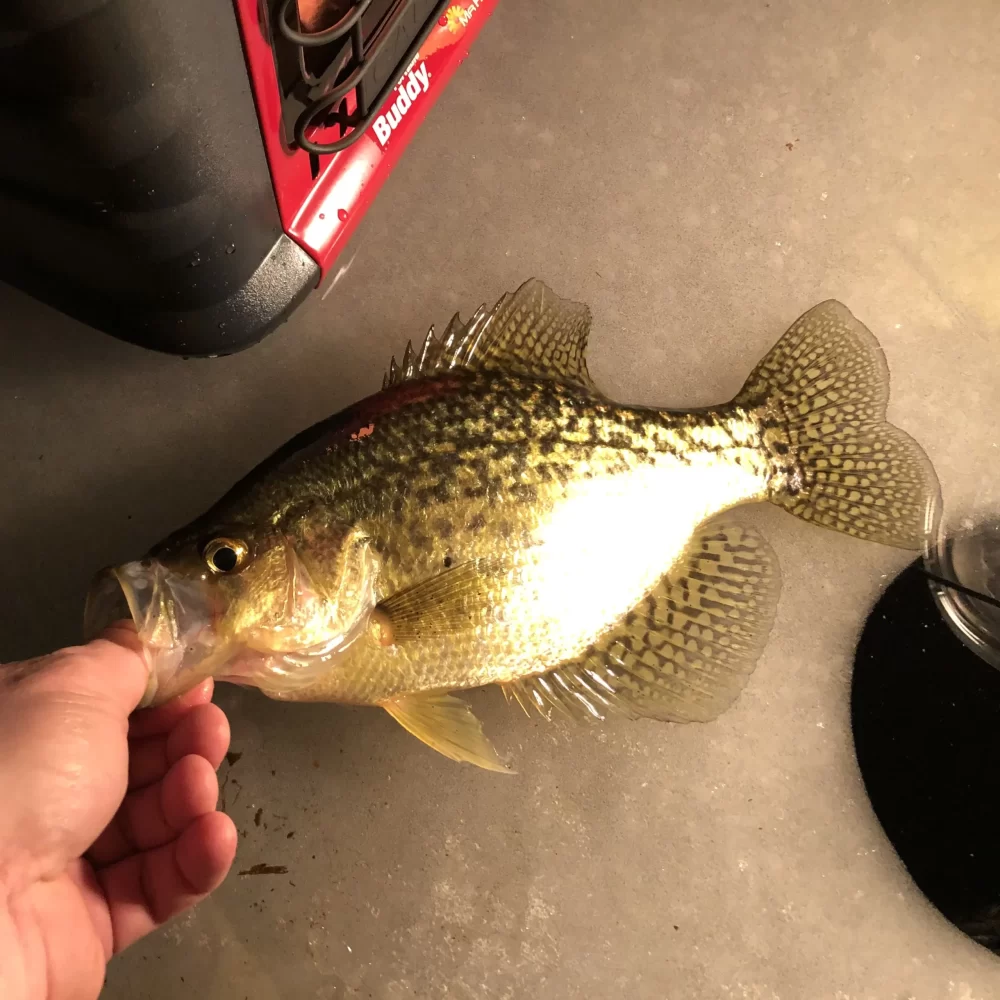
* This page contains affiliate links. The Great Lakes Fisherman may earn a commission on items purchased through these links. For more on this, please click here.
One of the most popular fish species to target through the ice is crappies. They also happen to the be a favorite of The Great Lakes Fisherman. While these tasty fish can be caught throughout the day on most lakes in the Great Lakes region, crappie are a low-light fish. This means that the best times of day to target them, especially in clear water, are in the early morning and late evening hours. In fact, one the most productive times of day for catching crappie is just before sunset to several hours after dark. But ironically, just when the crappie are starting to bite, most fisherman are heading to the car. With a little preparation and the right equipment, however, fishing into the night can be one the most rewarding experiences on the ice. If you’re new to this type of fishing and don’t know where to start, read on! The following info will help get you onto the fish fast.
Safety First
The first thing to consider when ice fishing after dark is safety. Being alone by yourself after dark can be dangerous. Always take a friend along to make sure you have help in the case of an emergency. The last thing you want is to get into trouble while you are alone out on a lake in the dark with no one around to help.
As always, follow all general ice fishing safety tips. You can find some great ice fishing tips in this article. To that end, be sure to arrive well before dark to ensure that the ice conditions are safe. This way, you can get to your spot, get setup and have time to check out the surroundings to be sure there are no obvious dangers before you lose daylight.
Finally, remember that there is always risk associated with ice fishing. When in doubt, don’t go out. Live to fish another day!
Equipment Needed
Aside from all of your standard ice fishing equipment (rod, reel, bait, auger, etc.), there are a couple of things you will need to make your night trip a success.
First off, you will need a strong light source. There are a couple of main options that you have for this, the first of which is a lantern. These come in both gas and electric varieties.
When it comes to gas lanterns, Coleman makes a dual fuel gas lantern as well as a propane lantern. Either of these are great options and will do the trick. One of the advantages of a gas lantern are that they also supply a source of heat to keep your hands warm.
The second main option for a light source is a submersible light Be sure to check your local regulations to be sure that they are legal in your jurisdiction.
Regardless of which light source you choose, the main thing is you need something that will penetrate the water column. The deeper the water you are fishing, the stronger the light you will need.
The second thing that you should have is a sonar flasher unit. Although not required, this is highly recommended as it greatly increases your catch rate, especially on the ice. For one, it lets you know if there are any fish under you. This is particularly important for ice fisherman because you are forced to fish from a single spot and lack the mobility of open water fishing. Second, it let’s you know where in the water column the fish are located. When fishing for species that tend to reside close to the bottom, this isn’t as critical because you can always find the bottom. Crappie, however, can be found throughout the water column. Without knowing specifically where they are, you can fish all night right, right over fish without a bite because you have your bait at the wrong depth. Third, it provides real time feedback on how the fish are reacting to your presentation. There is no single piece of fishing equipment that has improved my catch rates more so than a sonar flasher for ice fishing.
Calling in the Fish
Fishing under a light at night is the key to attracting crappies. Why? Because you are effectively building a food chain right under your feet! Here’s how.
Stage 1: Getting a Light Cone Established
The first stage in the process is getting the light cone in place. It doesn’t hurt to get your light going once it starts to get noticeably darker. It takes some time for the light to start working, so if you wait until dark, you may be waiting longer into the night before the bite really gets going.
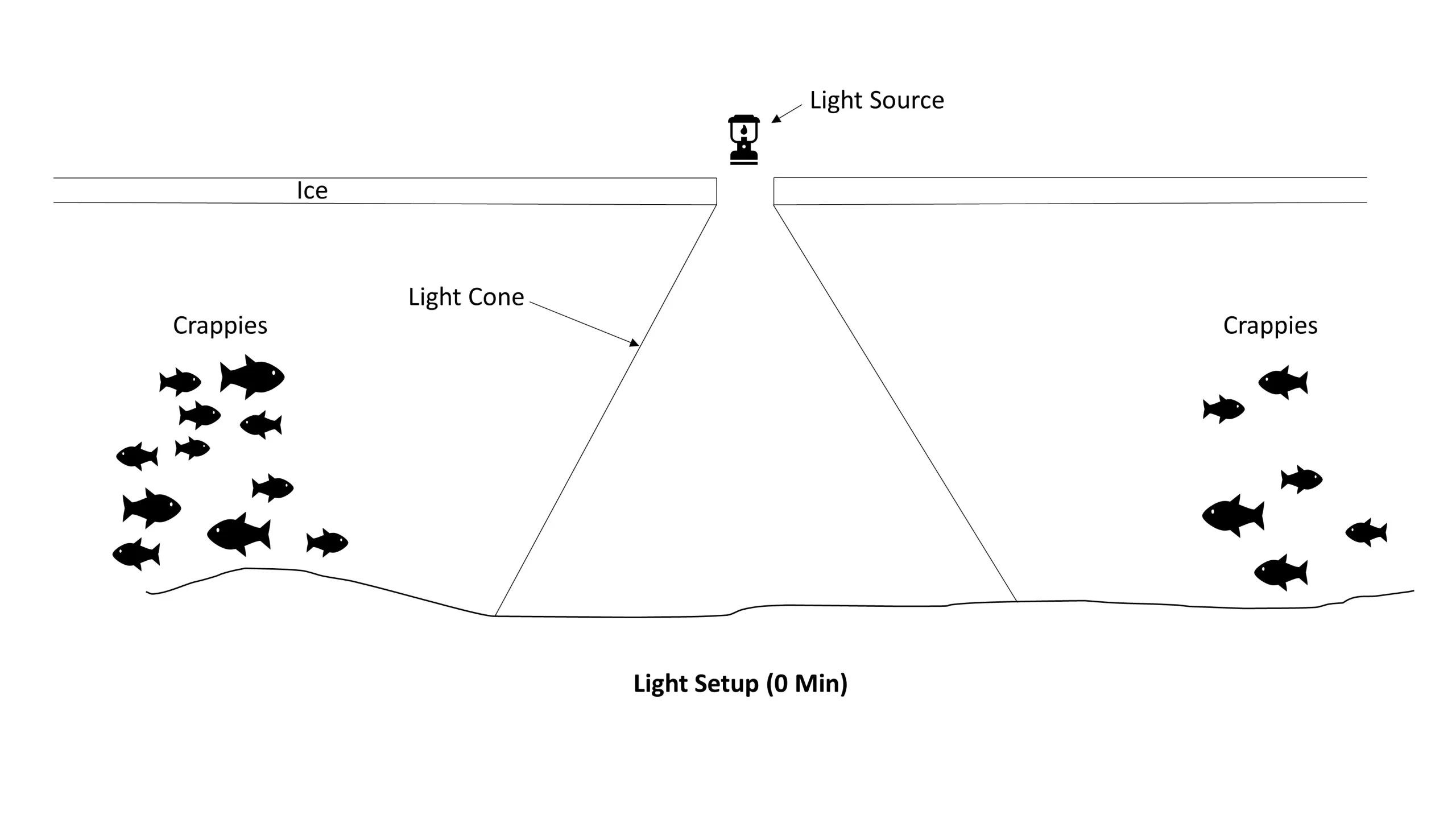
Stage 2: Plankton Show Up
As the light in this cone becomes brighter than the ambient light under the water, it will begin to attract plankton. These organisms provide food for minnows and other small fish.
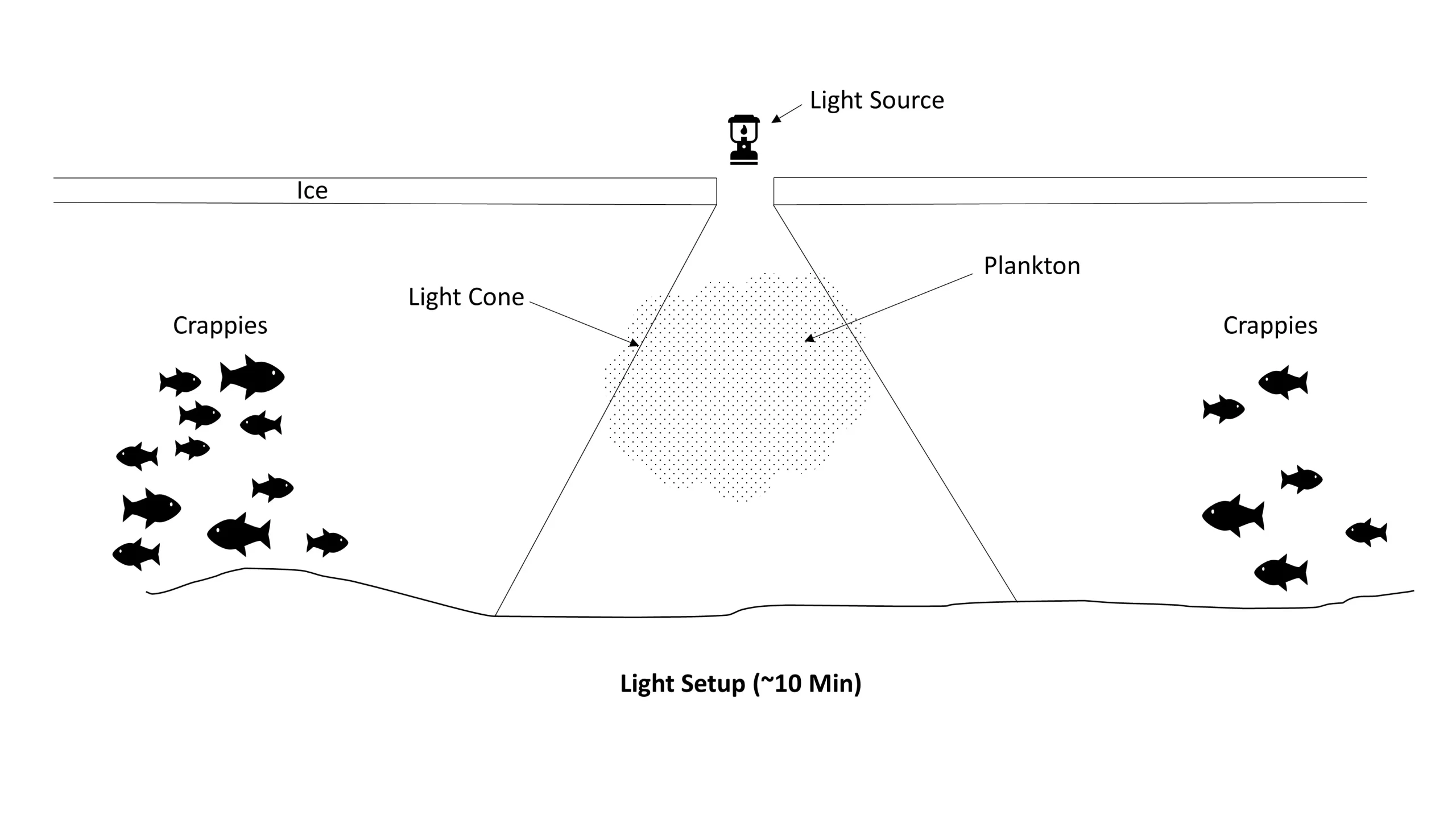
Stage 3: Minnows Show Up
Once the plankton cloud has established itself in the light cone, minnows will begin to show up to take advantage of the concentrated food source.
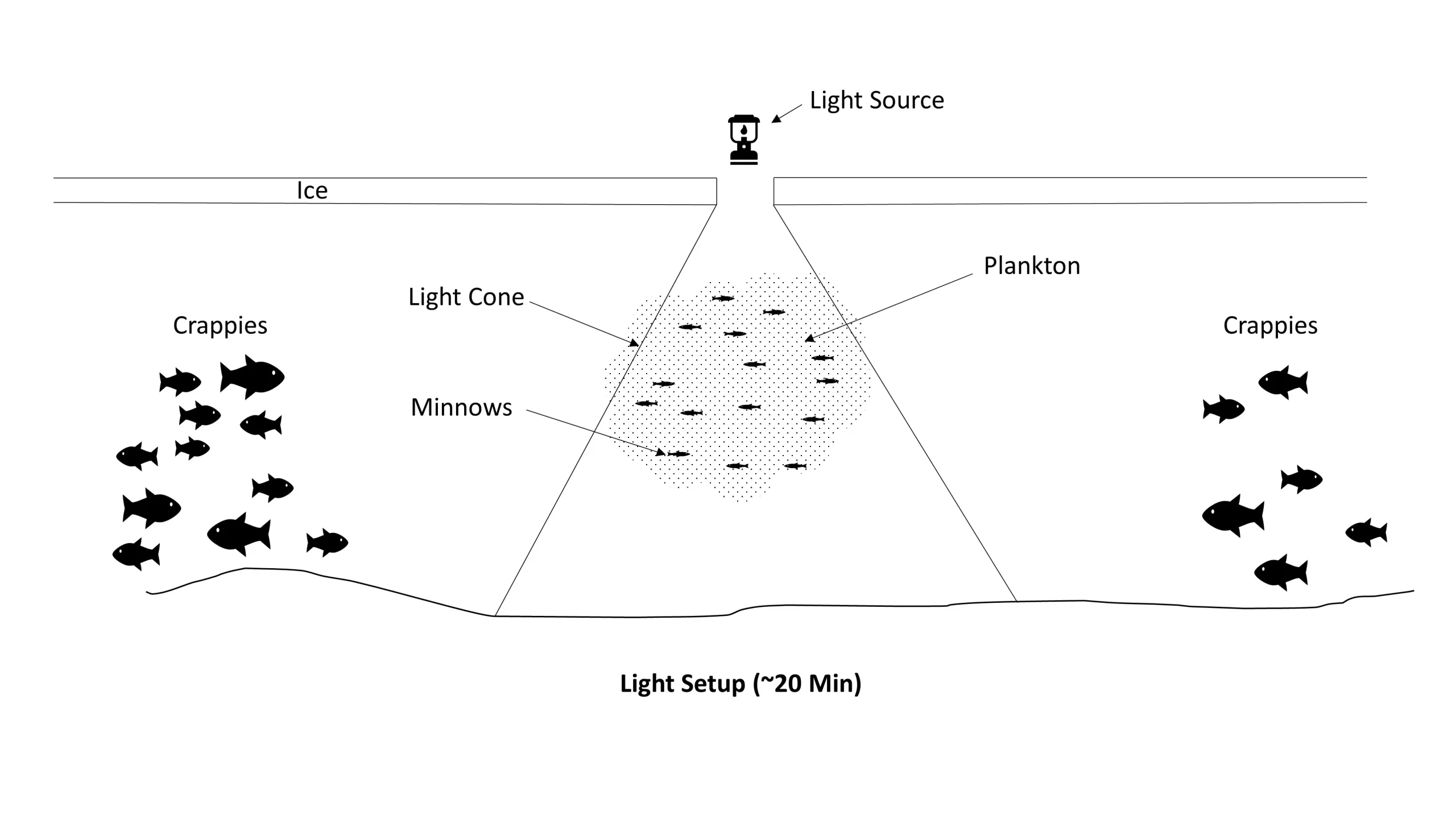
Stage 4: Crappies Show Up
Finally, crappie and other gamefish show up to begin feasting on the minnows. Now it’s time to catch some slabs!
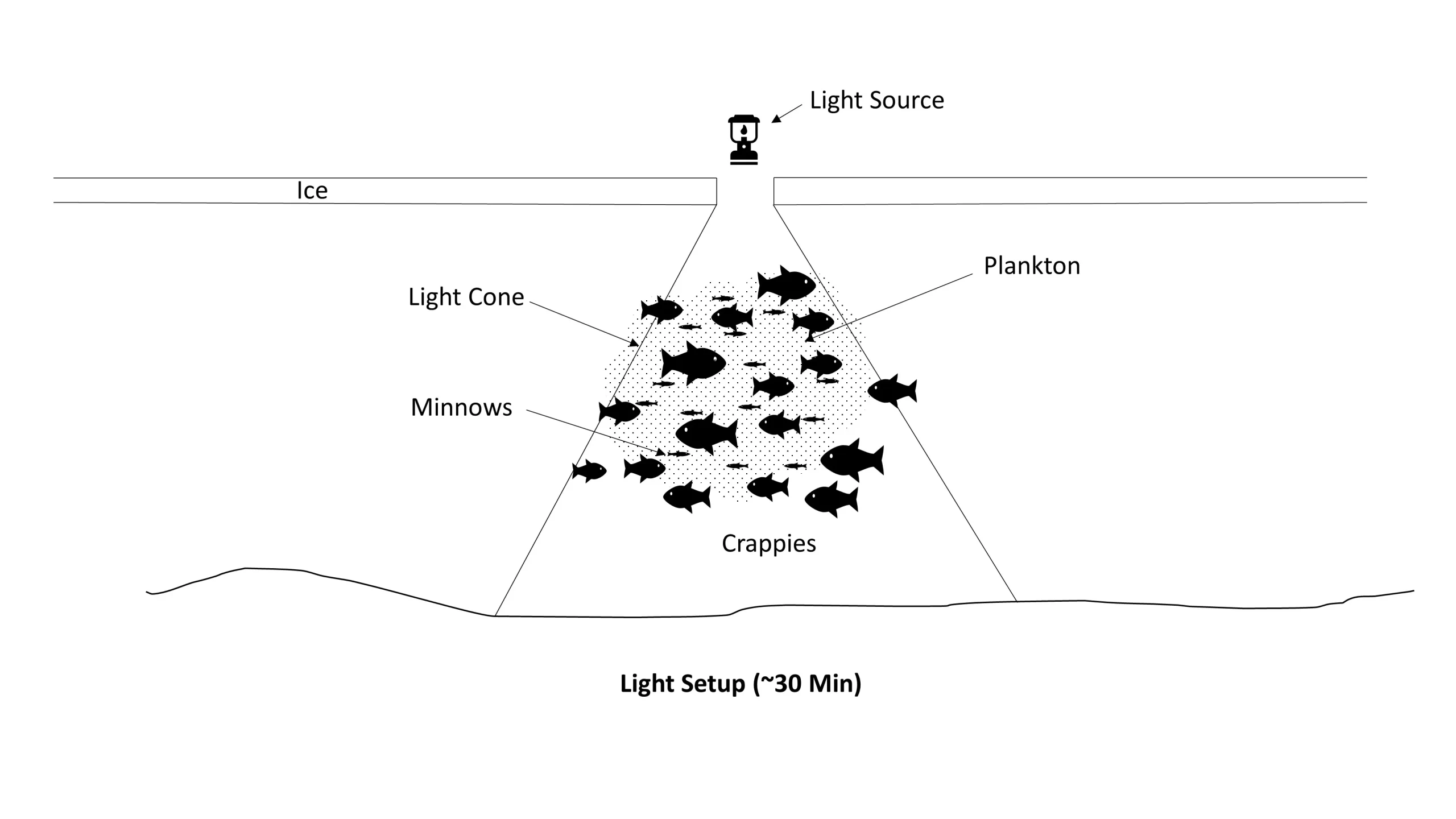
This technique is very productive as long as you are in the general area where crappies are known to inhabit. If after 30 minutes in one location there are no signs of fish, it’s probably time to move.
Catching Crappie
Now that the fish are here, it’s time to catch them. But how?
Crappie are built to hunt for prey above them. If you don’t believe it, just take a look at a crappie from the top. You will notice that both eyes are clearly visible, which means that both eyes can easily see anything that moves above them. With the lantern light providing a bright backdrop, the plankton and minnows are easy to see, making feeding easy.
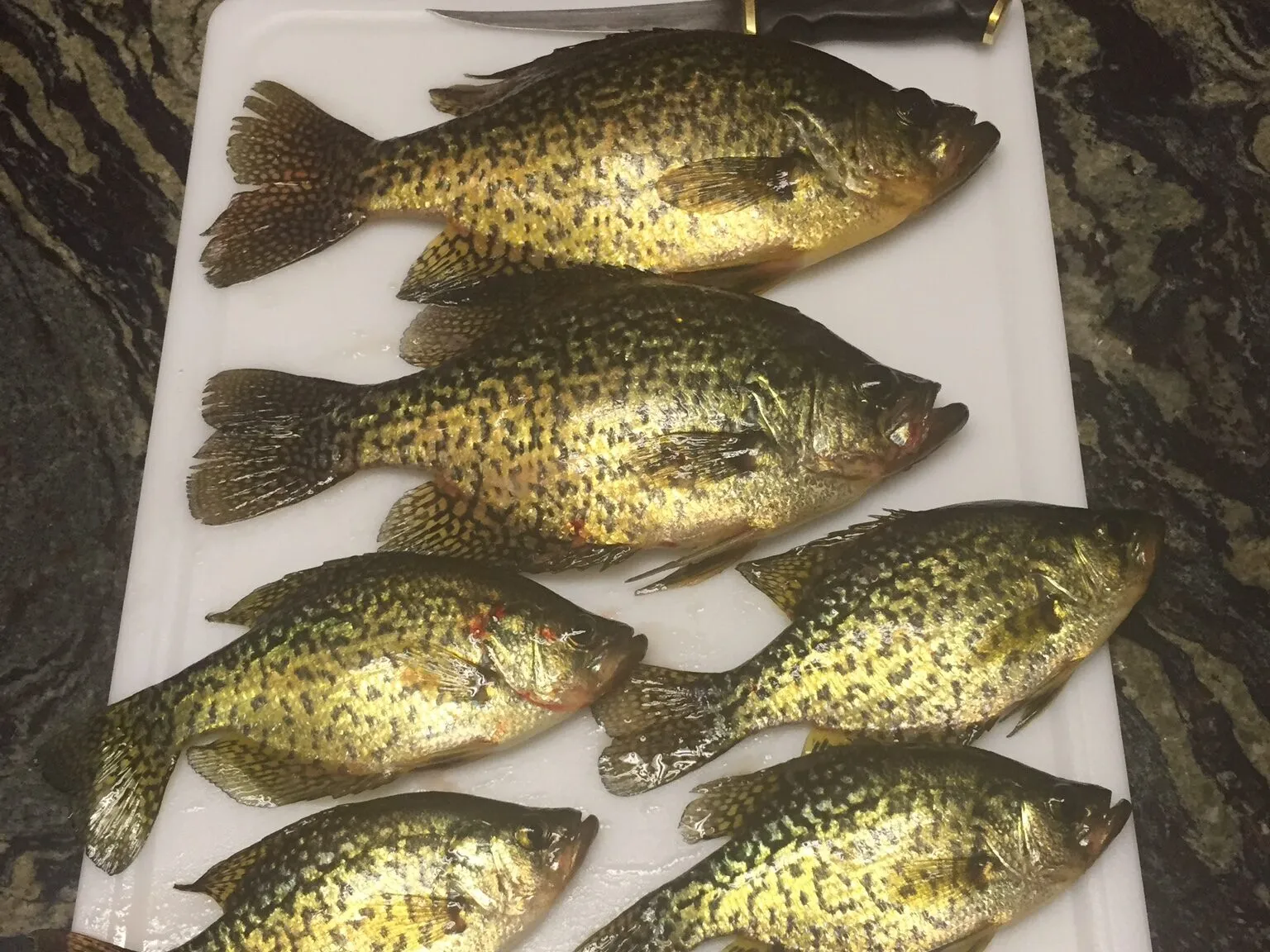
When targeting these fish, a common technique is to slowly lift your bait (usually a minnow or grub-tipped jig) using a slight jigging action. This will trigger a strike much faster than any other technique. If you are using a flasher (sonar) unit, start your bait at or just below the fish you are targeting and, using a jigging motion, bring your bait up slowly. You may notice the fish starting to follow the bait once it gets a foot or so above them. If they start to chase aggressively, a common technique is to abruptly stop the jig. This will result in the crappie sort of “running into the bait” unexpectedly which often times will elicit a strike. Just keep repeating this pattern on different targets. You may find fish at certain depths are more active than fish at other depths.
Night time fishing for crappies is one of the most productive ways I have found to catch these fish in the north. With a little experimentation, you will find the baits, colors and techniques to fill your bucket in no time. If you have any questions or are still struggling to find and catch crappies using the information in this article, feel free to drop me a comment below or send an email and I’d be happy to help provide some advice!
Stay safe out there!
Ice Fishing Preparation & Safety
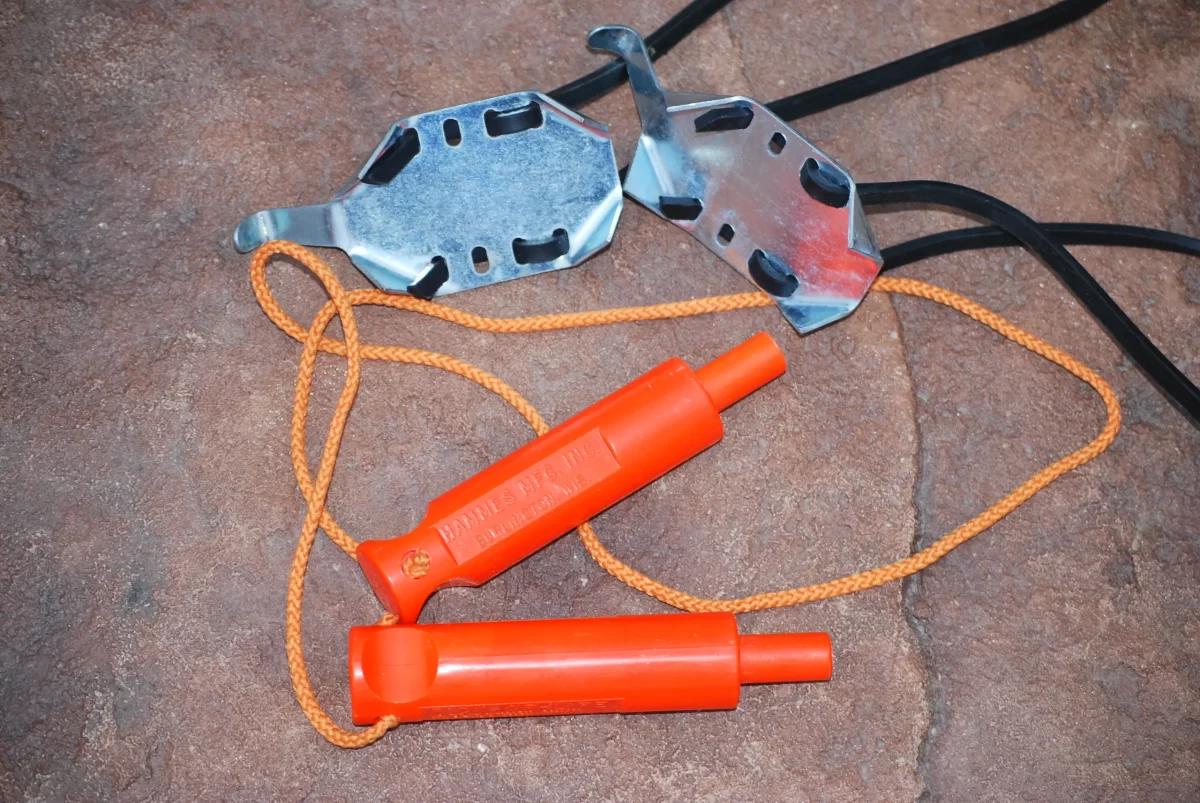
* This page contains affiliate links. The Great Lakes Fisherman may earn a commission on items purchased through these links. For more on this, please click here.
It’s that time of year when upper Midwest fisherman transition from the soft water to the hard water. For those that aren’t familiar with the term, “hard water” is fisherman speak for ice. This is a true passion for many, with some actually preferring ice fishing to any other.
While ice fishing can be an enjoyable way to spend the cold winter months, proper preparation is necessary to ensure a safe and comfortable day on the ice. Whether you are new to ice fishing or a seasoned veteran, proper preparation is the key.
Ice Thickness and Quality
By far, the most important aspect of ice fishing from a safety perspective is ensuring you are walking or riding on stable ice. While it is virtually impossible to know the stability of ice under the entire lake, there are some things that can be done to greatly increase the odds of breaking through.
1. Be Aware of Moving Water
Flowing water contains more energy than still water. This means that it doesn’t freeze as easily. Make sure you are aware of the locations of any streams, creeks, canals or rivers that may flow into or out of the lake you are fishing. Areas around these inlets or outlets will likely have thinner ice than the rest of the lake.
2. Be Aware of Spring Water
Another thing to mindful of is spring water. Spring water, that is, water that seeps out of the earth, tends to hold in the high 40s to lower 50s. Lakes that have active springs feeding them will tend to have thinner ice in areas around these underwater springs.
3. Check the Ice Before Venturing Out
Be sure to check the ice before getting away from shore. Make sure that you drill or spud a hole. While this doesn’t necessarily represent the whole body of water, it is a good first indication.
4. Don’t Ice Fish Alone
Though tempting it may be, fishing alone can be dangerous. It is wise to go ice fishing with a friend or family member. If you must go alone, be sure to go somewhere where there are other ice fisherman so that in the event of an emergency, you have access to help from others.
5. Don’t Venture Far from the Pack
Staying close to other ice fisherman is important for a couple of reasons. First, if you are new to a body of water, it provides an indication of where the safer ice is. In addition, should you have an emergency, help is not far away.
Safety Gear
There are a few items that every ice fisherman should have when it comes to safety gear. Here is a short list.
1. Ice Awls
Ice awls are essentially ice picks that can be driven into the ice by hand to help provide leverage to pull yourself out should you fall through the ice. Many are designed so that the picks are retracted into a plastic sleeve or housing to prevent you from accidentally spiking yourself. When the awls are slammed downward and into ice, the plastic retracts allowing the steel to penetrate the ice. This allows you to pull yourself out without assistance.
2. Ice Cleats
Walking on a smooth, ice covered surface can be very difficult. And if that ice is wet, not only can it be nearly impossible to walk, but there is serious danger of a slip hazard. This is where ice cleats come in handy. Ice cleats are to your boots what snow chains are to tires. They provide spiked pressure points on the soles of your boots that allow you to walk on the slickest of ice, slip-free.
3. Carry a Whistle
This may seem simple, but a whistle worn around your neck will help you alert others should you have an emergency that requires help. Nothing fancy – but the louder the better.
4. Dress in Proper Attire
An often overlooked safety issue for ice fishermen is frost bite. When you are ice fishing, your hands will eventually get wet with water that is hovering around 32ºF (0ºC). Combine this with even colder winds that blow unobstructed across the lake, and you have a recipe for some dangerously cold fingers. Appropriately rated apparel, including good boots and gloves, are a must for a worry free and comfortable day on the ice.
“But”, you may say, “I have a good shanty and a heater, so I don’t need to worry about having all that stuff on.” As the old saying goes, it is better to have it and not need it, than to need it and not have it. Removing an extra layer is easy if you are getting too warm. But you can put it back on if the temperature drops, the wind picks up, or your heater runs out of fuel.
Following the above tips will help ensure that you have a safe and comfortable day out on the hard water!
Salmon Patties

* This page contains affiliate links. The Great Lakes Fisherman may earn a commission on items purchased through these links. For more on this, please click here.
Never tried salmon patties? You’re gonna love them. I am told smoking the salmon before canning it puts it on another level. This recipe also works well with canned mackerel.
Recipe
Serves: 2-4 Prep Time: 20 min. Cook Time: 10 min.
Ingredients
- 1-15 oz. can of boneless, skinless salmon (or mackerel)
- 1 tbsp. Old Bay seasoning
- 1 egg
- 1/4 cup of Italian bread crumbs
- 1/4 cup of diced onions (optional)
- 2 tbsp. olive oil
- Remoulade (optional)
Directions
Drain the can of salmon and flake the fish with a fork. In a separate bowl, whisk 1 egg.
Combine the salmon, egg, bread crumbs and diced onions (if desired) thoroughly with a fork. Mold into patties. One can should make 2 large patties or 4 smaller patties.
Heat a cast iron skillet (preferred) or non-stick pan until it is very hot. Add olive oil and wait 30 seconds for it to get hot. Sear patties until each side is uniformly browned, usually 3-4 minutes per side.
Drizzle the patties with the remoulade and serve.
An Update on Asian Carp
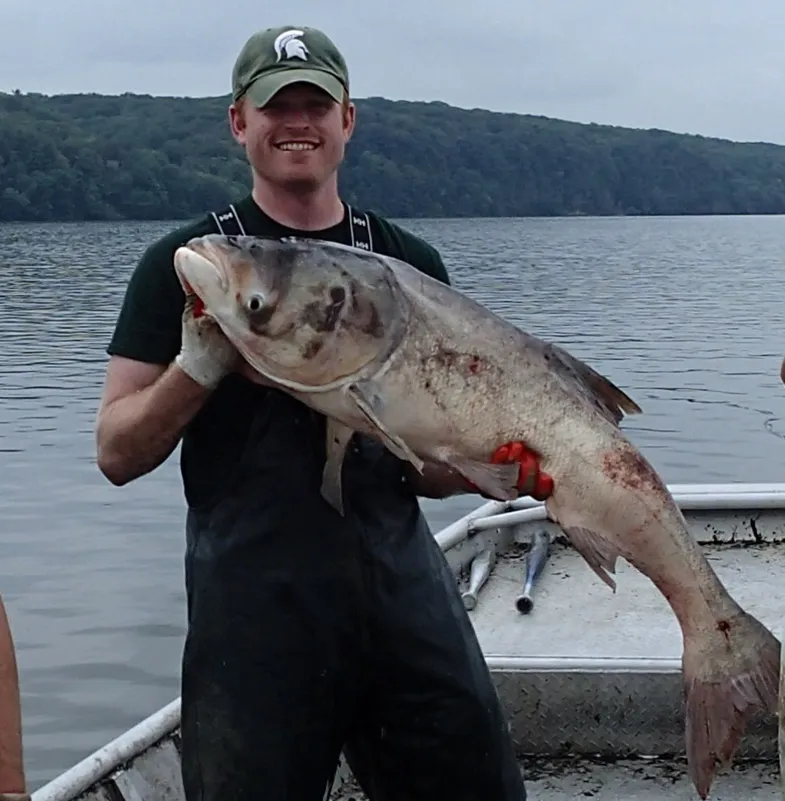
* This page contains affiliate links. The Great Lakes Fisherman may earn a commission on items purchased through these links. For more on this, please click here.
Unless you are new to the Great Lakes region, you have probably heard about the invasive carp. These fish have been the topic of serious debate over the last few decades among local, state, and federal officials as they pose a major threat to the Great Lakes ecosystem. Having been inadvertently released from rearing ponds in the south during flood events in the 1960s, these fish quickly spread throughout the south and lower Midwest in the 1970s, ’80s and ’90s.
Invasive Carp
In all, there are 4 species of carp that threaten the lakes: bighead carp, black carp, grass carp & silver carp. The grass carp has already been found in parts of the Great Lakes. The good news is that most of these fish were found to be sterile, likely because they were transplanted from private waters where triploid (sterile) versions of the fish are permitted. However, there have been some diploid (non-sterile) versions found over the last decade, mostly in Lake Erie tributaries. Efforts are underway there to eradicate these fish. For more on this, see the Lake Erie Grass Carp Adaptive Response Strategy.
The bighead and silver carp are the species of most concern due to a couple of factors. First, they are already present in the Illinois River System with only a man-made barrier currently keeping them at bay. Second, they have a very high reproduction rate and tend to dominate ecosystems wherever they establish themselves. The fear is that the Great Lakes could be over-run with these fish should they establish themselves on the other side of the barrier. So it should be no surprise that hundreds of millions of dollars have been and will continue to be spent on efforts to prevent their entry and protect our valuable resources.
Apart from the ecological threat, the silver carp also presents a physical threat due to a behavioral trait that makes them jump when startled. When boat motors run through large schools of these fish, they can jump out of the water by the hundreds. This can pose a serious safety hazard for those in the boat. Though the thought of it may seem funny, being hit by a 20-40 pound fish while travelling at high speeds is no laughing matter. People have suffered broken bones from collisions with the jumping fish.
Although the black carp is not yet geographically a direct threat to the lakes, their range continues to expand and they could one day become a bigger problem.
Recognizing the threat early, efforts began in the 1990’s to install barriers to prevent the carp from getting into the Great Lakes tributary system. The largest barrier in this effort to date was constructed on the Chicago Sanitary and Ship Canal (CSSC) and placed in service in 2002.
Known as the Electric Barriers, this facility establishes a continuous electric field across the waterway that will kill any carp that attempt to swim across it. But even with this barrier in place, there is concern among authorities that it is not enough, and only a matter of time before fish populations establish themselves on the other side.
Q & A with Seth Herbst of the MI-DNR
The Great Lakes Fisherman recently caught up with the Michigan Department of Natural Resources to find out more about the invasive (Asian) carp, their threat to the Great Lakes, and the latest measures being considered to prevent their entry.

Seth Herbst is the Aquatic Species and Regulatory Affairs Unit Manager with the DNR Fisheries Division. Prior to joining the MDNR in 2013, he earned his B.S. in Fisheries and Water Resources from University of Wisconsin-Stevens Point, M.S. in Aquatic Ecology and Watershed Science from the University of Vermont, and Ph.D. in Fisheries and Wildlife from Michigan State University. He also gained professional fisheries management experience working several seasons as a Fisheries
Technician with the Minnesota DNR and Wisconsin DNR. One of his primary responsibilities is to administer the Division’s aquatic invasive species (AIS) program. Additionally, he is an active member of numerous regional AIS committees in the Great Lakes region, such as the Invasive Carp Regional Coordinating Committee (ICRCC), a steering committee member for the Invasive Mussel Collaborative, a member of the Lake Erie Grass Carp Advisory Committee, and actively involved with the Great Lakes Panel for Aquatic Nuisance Species.
GLF: Which agencies are in charge of the efforts to prevent invasion of Asian carp into the Great Lakes, and how do they coordinate with state and provincial agencies in this effort?
SH: The state and provincial agencies have jurisdictional authority over the management of their respective fisheries resources, and that includes the prevention of invasive (previously Asian) carp into the Great Lakes. The state agencies actively collaborate with several federal agencies (i.e., U.S. Fish and Wildlife Service, U.S. Army Corps of Engineers, U.S. Geologic Survey, Department of Fisheries and Oceans Canada) to implement prevention and control measures to reduce the risk of bighead, silver, and black carp entering the Great Lakes. There are also several universities throughout the Midwest that contribute through research projects to advance the science of invasive carp deterrent technologies and also to evaluate innovative control methods. Additionally, NGOs [non-governmental organizations] have contributed to the issue through their advocacy efforts to promote this issue, so state and federal agencies are funded at a level necessary to effectively address the issue. The invasive carp efforts are largely financially supported through the Great Lakes Restoration Initiative (GLRI).
GLF: When we hear that invasive carp DNA has been found in the great lakes, what does that mean?
SH: When you hear invasive carp DNA, it typically refers to environmental DNA or eDNA and the means the DNA of specific species that is present in the environment as a result of genetic material being deposited. There are several potential sources that can lead to genetic material being present in the environment, such as live fish but genetic material can also come from external sources that are not associated with live fish in the waterbody of interest. The U.S. Fish and Wildlife Service implements an early detection surveillance program for bighead and silver carps throughout the Great Lakes Basin that relies on collecting waters samples and then analyzing those samples for the genetic material (i.e., eDNA) of bighead and silver carps. The eDNA results are typically reviewed by professionals to assess the risk of a positive detection. Typically, the higher proportion of positive samples from a sampling event or through time would result in more concern that live fish are present. Regardless, eDNA is one effective tool for early detection and results should be put in context with other sources of information to inform the presence of a fish species, such as traditional fisheries sampling methods and angler reports.
GLF: What are potential entry points of concern, other than through the Chicago River?
SH: The Chicago Area Waterway System is the location identified as the highest risk for the introduction of bighead, silver, and black carps into the Great Lakes. There were other connections identified during the Great Lakes Mississippi River Interbasin Study (GLMRIS) that was conducted several years ago, but those connections are lower risk and are already being mitigated through projects that removed the connections. For example, there was berm installed at Eagle Marsh in Indiana that addressed the connection between the Wabash River basin and the Lake Erie Basin that historically occurred during flooding events. The risk of introduction through the Chicago Area Waterway System is being addressed by advancing the state-of-the-art Brandon Road Lock and Dam project that would install technologies to deter fish from dispersing towards Lake Michigan from downstream areas in the Illinois River.
GLF: Besides the electric barriers in the CSSC, what other control measures are being seriously considered by authorities to prevent an invasion?
SH: There are several deterrent technologies that are being considered to prevent movement of invasive carps in riverine systems. The technologies include carbon dioxide, complex noise or acoustic stimuli, bioacoustics fish fence, and flushing jets to remove entrained fish from spaces between barges. You will notice that some of these technologies are also being recommended for the Brandon Road Lock and Dam project.
GLF: What are the economic, political, or other barriers that are could impede progress?
SH: The Brandon Road Lock and Dam project (see link above) would significantly reduce the risk of bighead, silver, and black carps entering the Great Lakes. This project, however, will come at an expense to the non-federal sponsor (State of Illinois and others willing to sign on) because the project at this time requires a 90:10 federal to non-federal sponsor financial support agreement. Therefore, a finalized project agreement might be a hurdle to overcome before the U.S. Army Corps can move forward with final design and construction.
GLF: If the carp get into the lakes, what are the most serious impacts that are expected to the ecosystem?
SH: Invasive carp pose significant ecological impacts and these impacts are described on our invasive carp website.
GLF: If carp do get into the system, what can be done to control their impacts?
SH: If invasive carp get introduced into the Great Lakes, the state would take aggressive actions to prevent the establishment of these species by implementing strategic actions identified in the Invasive Carp Management Plan. A priority would also be associated with limiting their ability to migrate upstream to complete their spawning activities. These species require open riverine environments to successfully spawn, so limiting their ability to make those upstream migrations would reduce the likelihood of establishment.
GLF: What can anglers do to help prevent a carp invasion?
SH: Anglers can report suspicious sighting of potential invasive carp using our Eyes in the Field reporting application. Also be sure to include a photo or video to help confirm identification because native fish species are commonly misidentified and thought to be invasive carp.
GLF: Is there anything else you would want anglers to know about invasive carp and the Great Lakes?
SH: The prevention of invasive carp is a top priority for our Governor and for the Department of Natural Resources. There is no evidence of established bighead, silver, and black carps in the Great Lakes and the DNR is working diligently to ensure these species don’t make their way into MI waters and the Great Lakes.
The Great Lakes Fisherman would like to thank Seth for taking the time to better inform us of the issues and efforts underway to protect our Midwest treasure. If there is more info that you’d like to learn regarding invasive carp or an other topic related to the Great Lakes fishery, please drop a comment below and let us know what’s on your mind.
Smallmouth Bass and the Round Goby
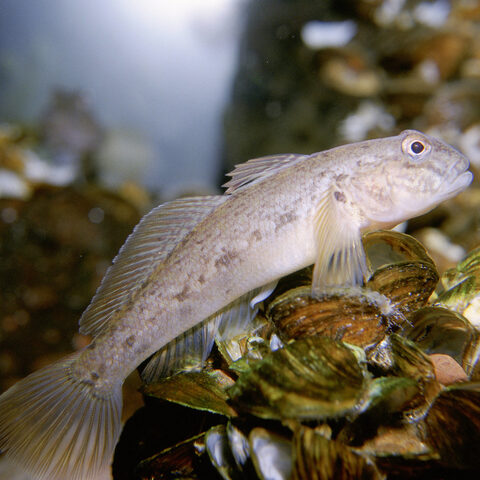
* This page contains affiliate links. The Great Lakes Fisherman may earn a commission on items purchased through these links. For more on this, please click here.
In general, invasive species are undesirable. They tend to have unexpected and often adverse effects on steady-state ecosystems. Because of the size of the recreational and commercial industries connected to the Great Lakes fishery, serious money is spent on preventing and/or controlling these invasions. But just because they are not desirable, doesn’t mean that they don’t bring some benefits. Here, we’ll discuss the impact the round goby has had on the smallmouth bass in the Great Lakes.
The round goby is believed to have been first introduced to the Great Lakes in 1990 via the dumping of ship ballast water. The fish quickly spread throughout the lakes following their introduction. By the early 2000’s, these fish blanketed the lake bottom in many areas. In a study published by the Journal of Great Lakes Research (Volume 31, Issue 1, 2005, Pages 78-86), it was estimated that in 2002, there were ~9.9 billion gobies in the western basin of Lake Erie alone. This type of proliferation is bound to have major impacts on an ecosystem.
The goby is a voracious feeder that loves mussels, small fish and worst of all for fisherman, fish eggs. Furthermore, it tends to dominate the spawning grounds of other fish species. Because of this dominance, the reproduction rates of native species often suffer.
As with any change to the steady state of a biosphere, it took some time for the established members of the Great Lakes fish population to come to terms with its newest resident. But eventually, some of them became quite fond of the goby. And for smallmouth bass, the relationship has blossomed into a thing of beauty. Well, at least for the bass.
According to another study published in 2016 by the Journal of Great Lakes Research (Volume 42, Issue 2), the goby had become the top food choice of the smallmouth bass in waters of the eastern end of Lake Erie. Furthermore, the study found that the bass had increased in size after switching over to the goby-dominated diet. Still not convinced? Just ask any bass fisherman that has fished the lakes for the last 20 years and they will tell you that the smallmouth are larger and more plentiful than ever.
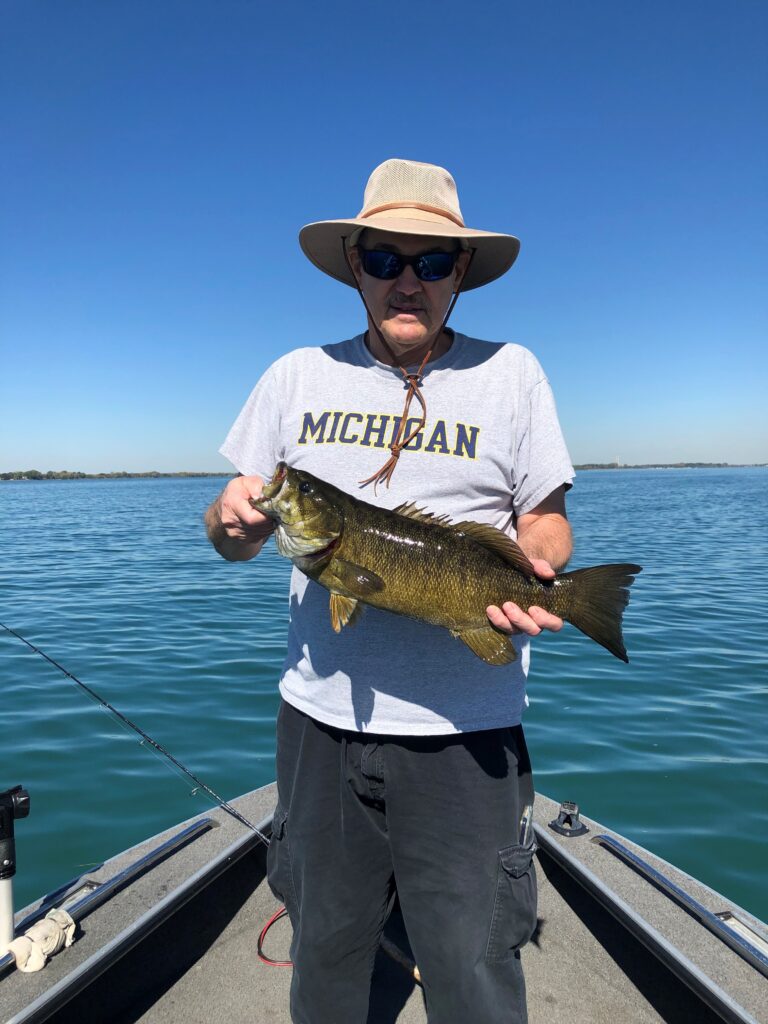
It should be no surprise therefore, that in October of 2022, a new Great Lakes smallmouth bass record was set on Lake Erie. The new record of 10.15 lb shattered the previous record of 9 lb, 8 oz that was set in 1993. Once certified, this will also likely be a record for the Province of Ontario (current record: 9 lb, 13 oz). Furthermore, this fish was less than 2 lbs. shy of the current world record set in 1955 on Dale Hollow Reservoir of 11 lb-15oz.
In the grand scheme of things, this Great Lakes record fish comes early-on in the post-goby introduction era. In addition, modern technology, such as live sonar, has made identifying and targeting individual fish a
new phenomenon. What does all of this mean? It means that more than likely, this Great Lakes record will be broken again in the within next decade and that there is a real possibility of a new world record smallmouth bass coming from Lake Erie in the next couple of decades.
For those new to bass fishing and wanting to give it a try, common techniques include casting suspended jerk baits and tube baits which imitate crayfish and gobies. This is where the smallmouth will cruise in search of a meal. The presentation of jerk-baits and tubes are very similar. Twitch the bait near or along the bottom to elicit a strike from a hungry bass. Look for areas with structure, especially in areas 10-20 ft deep with a rocky or gravelly bottom. This is where the gobies like to hang out and where you are the most likely to find hungry bass.
The goby has become such a common part of the smallmouth diet, that there is now even a market for goby-style fishing lures. These are available in soft plastic varieties such as the WildEye Live Goby (includes hook) and the Ultra Realistic Design Goby Paddletail (plastic only). This is a testament to just how much of a staple the goby has become for the bass.
The studies and data all seem to indicate that there is likely a world record lurking in the depths of Lake Erie, waiting for a lucky angler to find it. Since it appears that the goby are here to stay, why not grab your favorite bass fishing rod and hit the big lakes for a chance at world record fame?
How to Catch Yellow Perch on the Great Lakes
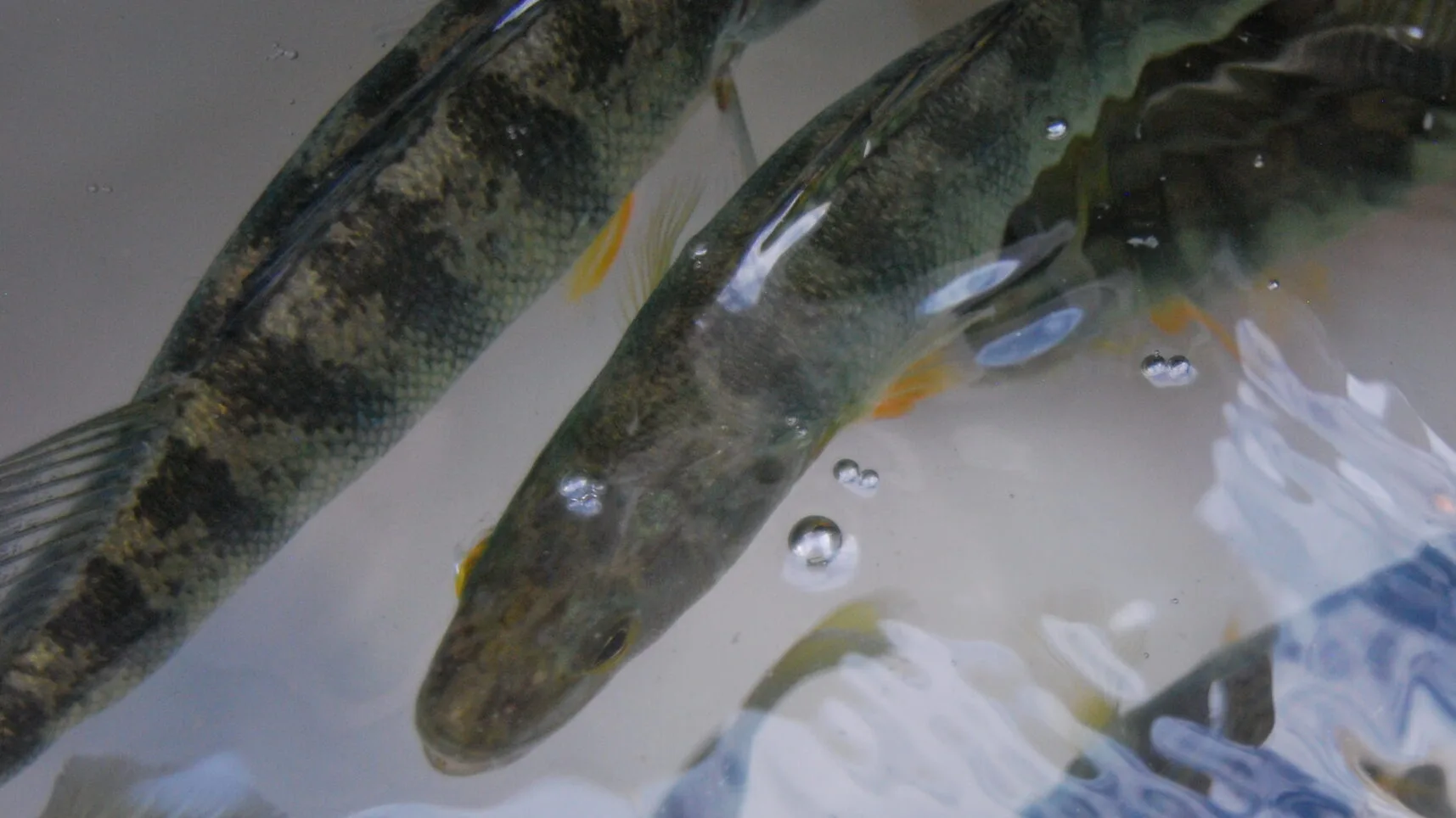
* This page contains affiliate links. The Great Lakes Fisherman may earn a commission on items purchased through these links. For more on this, please click here.
Yellow Perch (Perca flavescens) are a favorite table fare of fish connoisseurs. Their mild taste and firm texture make them perfect for cooking just about any way you’d like. They are also a great fish to target for families. This is because the action can often be fast and furious, leaving little time for boredom for the younger or less serious anglers. Lucky for anglers in the Midwest, they are also one of the most abundant game fish in the Great Lakes and can be caught year round. But how do you go about finding and catching these tasty critters? Here, we will discuss how to catch yellow perch on the Great Lakes.
The Gear
Perch fishing doesn’t require a lot of fancy equipment. A simple spinning rod and reel will do in most cases. However, the guide below will provide you with the detail necessary to put more fish in the cooler.
The Rod
A medium-light to medium action, 5.5′-7.5′ spinning rod with an appropriately paired spinning reel will work just fine for most perch fishing in waters up to 30′ deep. When the fish get deeper than 30′, the bite will be harder and harder to detect, prompting many to switch to longer, more sensitive rods. Some perch fisherman use rods as long as 10′ or more in deep water. This is because the tip movement is more pronounced on these rods, making the bite easier to detect.
The Line
Perch are not line shy. This means that generally speaking, any type of fishing line will work. That doesn’t mean that some lines aren’t better than others. Each type of fishing line will stretch to a different degree and too much line stretch make a perch bite harder to detect. In shallower waters, monofilament and flourocarbon work great. However, both of these lines have some stretch and when the bite is light or when fishing in deep water, the less stretch the better. In these situations, braided line works best as it has virtually no stretch and will pick up the slightest bump on the line. This telegraphs a bite very well in deep water. If you are concerned about line visibility, you can always add a flourocarbon leader to your braided line before tying on the perch rig.
The Rig and Bait
The most common bait used for catching yellow perch is live minnows. These are placed on hooks that are attached to a weighted line (be sure to check local fishing regulations for information on the number of hooks allowed per line in your jurisdiction). For beginning perch anglers, a “perch spreader” or “perch rig” can be purchased online or at your local great lakes tackle shop. These provide the entire setup needed with the exception of the bell sinker. These rigs involve arms with hooks that are cantilevered off of the main line. They are not expensive, going for just a few dollars each. (Tip: Hooking the minnow through the bottom jaw and nose will allow it to swim more freely and not die as quickly.)
When using these rigs, simply tie the top of the rig to your main line (some have pre-tied loops or swivels for easier attachment. Then just add a bell sinker to the bottom of the rig. For the bell sinker, choose the lightest weight that will ensure that the rig stays on the bottom. This will be dictated by depth, water current and wind/wave conditions. Bell sinkers from 1/2 oz to 1 oz are the most common.
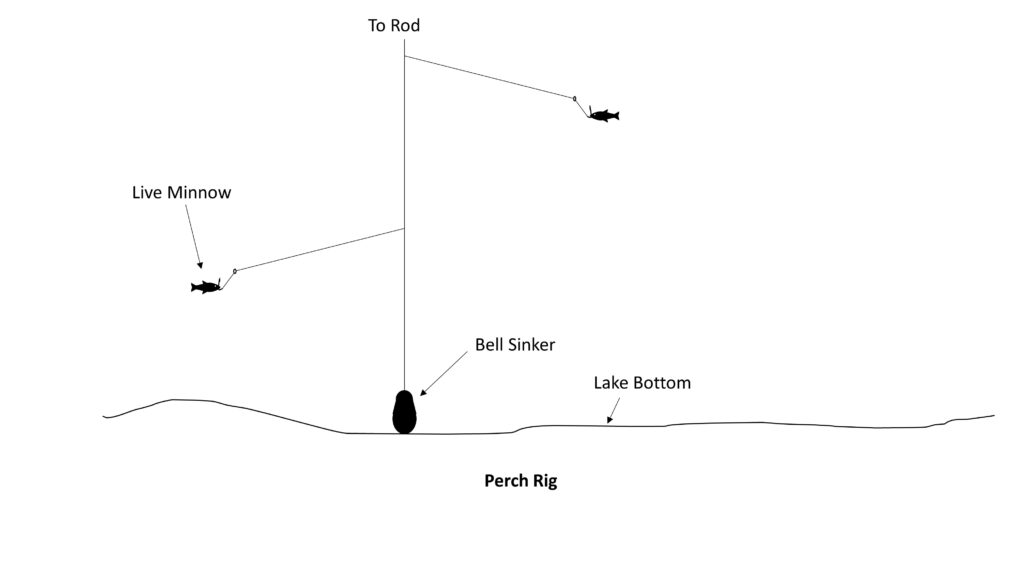
[ADDED 2/10/23: For an easy, do-it-yourself version of the perch rig, check out this video. We actually prefer these to the store-bought version as we find them more versatile, cheaper and more sensitive to the bite. If, after watching the video, you have any questions on how to tie these up, please drop us an email and we’d be happy to help.]
Locating Yellow Perch
Great Lakes perch tend to spend their time close to the lake bottoms in waters that are less than 30 feet deep, although they can be found in depths of up to 100 feet or more. They wander in schools foraging for food while finding safety in numbers. To find out where there are fishable numbers, simply follow these three steps.
Step 1: Check Fishing Reports to Find Which Ports in Your Area Have Active Fish
The best way to locate the general areas of the lakes that have an active perch bite is to browse local fishing reports. Schools of perch tend to be found in certain waters in different times of the year. Like many fish, perch tend to spend the hot summer months in deeper water than during the cooler months. Fall, winter and spring they can often be found in shallower water near weed beds. Checking local reports will give you the best indication of which port(s) to focus on at the time you plan to fish.
Step 2: Look for Clusters of Anchored Boats
Step one has given you a lead on a port to launch from. But the Great Lakes are huge and your work is not done yet. Once you are out on the lake, look for clusters of boats that appear to be anchored. Most people catch perch by anchoring their boats and fishing over individual schools. By locating a cluster of anchored boats, you are giving yourself a head start on locating some hungry fish. This doesn’t mean that this is the only place you’ll find perch. But it certainly can help quicken the search.
Step 3: Use Your Sonar to Locate Individual Schools of Fish
Whether or not you were able to find a boat cluster, this step is critical to finding fish. Most modern sonar units are sensitive enough to mark fish on or near the bottom. What you are looking for are small separations from the bottom. For this, it is recommended to not rely on your fish-finder’s fish alarms or symbols, but instead, decipher the marks yourself. When you start seeing a lot of small squiggly marks or arches right near the bottom, you have likely located a school of perch.
Catching Yellow Perch
Now that you are rigged up, it’s time to catch some perch. Anchoring the boat is the most common way to fish for perch because the schools are typically large enough to keep you busy in one location. There are anglers who will drift for perch to locate them. This is actually a common practice in areas of the Great Lakes where the schools are more scattered and weeds are not prevalent enough to become a snag nuisance. Nonetheless, most fisherman will anchor.
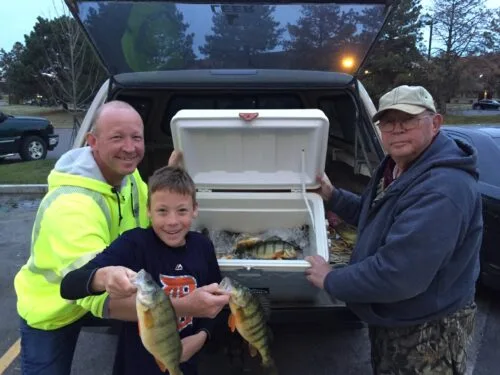
Once you have located a school of fish on the sonar, pull your boat directly upwind from that spot by the same distance that you expect your anchor line to take up. For example, if you are fishing in 20′ of water and based on the wind, you expect to need 100′ of anchor rope to hold you, pull your boat about 100′ upwind from the spot you marked the school. From there let out your anchor rope and watch your sonar. Once you have let out enough rope to hold the boat, continue letting out additional rope until you see the fish re-appear on your sonar. While it may sound difficult to do, you will typically have a lot of leeway as the schools tend to be quite large. Once the boat is anchored over the school, it’s time to drop lines!
Drop the weighted rig into the water and let out line until it stops pulling line off of the reel. This indicates that the weight has hit the bottom. Next, reel up the slack line until the line is just tight, but DO NOT pull the weight off of the bottom. Hold the rod to where the line is tight but the rod tip is not loaded or bent. This is the perfect position for feeling a bite. If the rod is loading up there, is a good chance that you are actually lifting the weight off of the bottom, lessening the chances of a bite. If your line is slack, you will often not feel the bite or feel it after the fish has completely swallowed the hook.
Once your line is set, just hold the rod still and watch the tip of the rod. If the bite is heavy, you will likely see the rod tip move and feel the bite through the rod. If it is very light, you may only notice a slight deviation in the rod tip and not feel anything at all. Either way, once you detect the bite, pull up swiftly by pivoting your wrist back towards you while lifting your arm upwards. This combined action will set the hook the fastest and will increase the number of hook-ups. Once the hook is set, simply reel in dinner. As always, be sure to check your regulations for creel limits.
Southern Fried Fish

* This page contains affiliate links. The Great Lakes Fisherman may earn a commission on items purchased through these links. For more on this, please click here.
What makes southern fried fish different from any other? It’s the cornmeal base for the breading. Traditional for fried catfish, this breading works well with just about any fish that you would fry. The key to this recipe (or any fried food) is to maintain the oil temps between 300-350 during the cooking process.
Recipe
Serves: 2-4 Prep Time: 30 min. Cook Time: 15 min.
Ingredients
- 1 lb. boneless fish fillets
- Dry breading mix (You can use a ready-made mix like Lousiana Fish Fry New Orleans Style or you can follow the recipe below).
- 1 cup of milk
- 1 egg
Dry Breading Mix
- 1 cup of cornflour or cornmeal
- 1 tbsp. cajun/creole seasoning
Directions
Prepare the fillets by ensuring all bones have been removed. Leaving the skin on is optional, but I prefer it removed. If using large fillets (like walleye), cut them into serving sized pieces. Pat fish dry.
In a bowl, whisk 1 egg with a cup of milk. In a separate bowl, combine the seasoning with the cornflour/cornmeal.
Fill a cast iron skillet or deep fryer with enough peanut oil to fry. For cast iron, 1/2″ of oil does the trick. For a deep fryer, follow the directions for your fryer for appropriate fill level. Pre-heat the oil to 350 degrees. It is important not to heat above this as the oil will begin to breakdown. This will cause an off-taste in the fish as well as put bad chemicals into your body.
Dip each piece of fish in the egg/milk mixture, then in the dry corn flour mixture. Place in the hot oil.
Fry the fish in small enough batches so that the oil temp doesn’t drop below 300. If the temp drops much below this, the fillets will start to soak up the oil.
Fry each batch until golden brown. As long as the oil temp stays in range, this should only take 3-4 minutes in a deep fryer and 2-3 minutes per side in a frying pan.
Remove the fillets to a paper towel lined plate to remove the excess oil. Lightly salt immediately so the salt will stick.
As long as you didn’t burn the cooking oil it can be filtered and reused.
Bottom-Bouncing for Walleye on Lake Erie
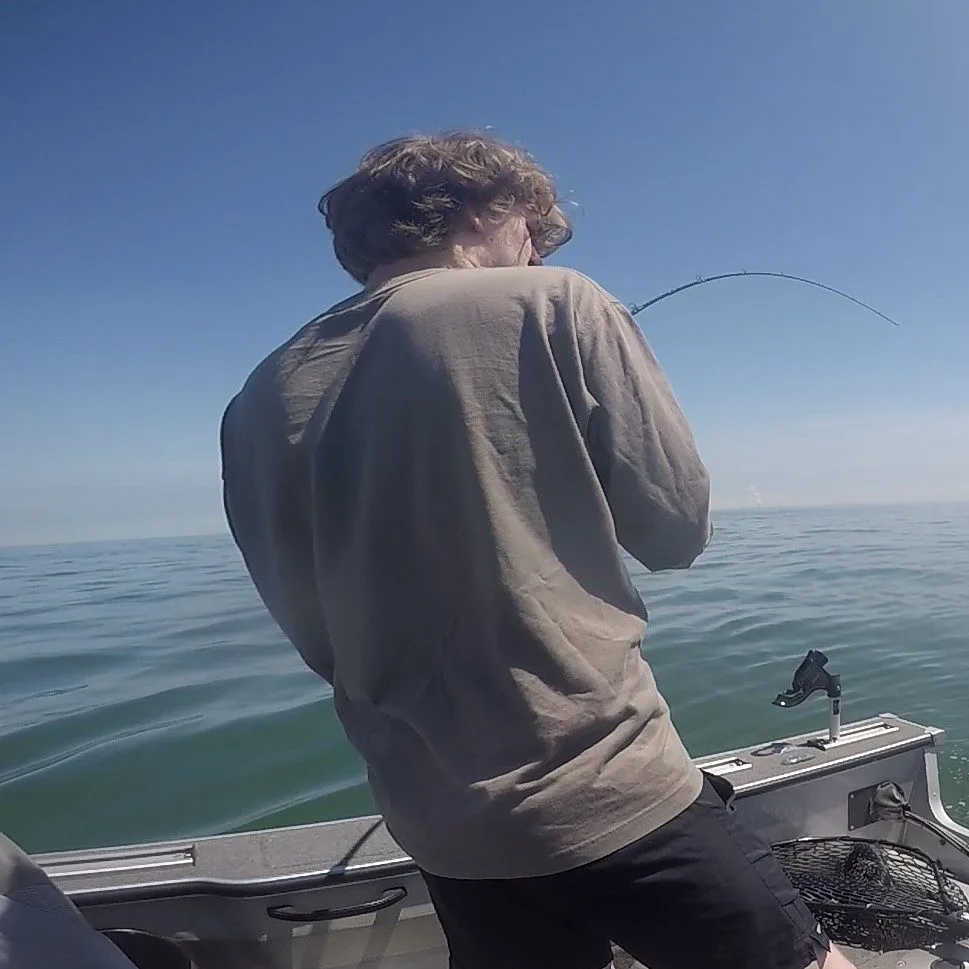
* This page contains affiliate links. The Great Lakes Fisherman may earn a commission on items purchased through these links. For more on this, please click here.
Bottom-bouncing for walleye can be one of the most productive way to catch these tasty fish. It can also be one of the most fun. This is because you need not worry about boat direction or running into other boats. Once everything is set up, it’s simply a matter of keeping the rods clear of weeds and catching fish! But it wasn’t always this way.
Having fished the Michigan waters of Lake Erie from the time I was 10, I have seen many changes to the lake. At one time, the lake was very murky with a visibility of only a foot or so. This low-light environment was perfect for holding walleye in the western basin. Trolling Hot-N-Tots, especially chartreuse, was the method of choice back then and spreading them out on planer boards almost assured success.
Since then, zebra and quaga mussels have cleaned up the lake water tremendously. This has changed the low-light environment under the water, driving the fish deeper in the shallow waters of the western basin. Because of this, newer tactics have been tested over the years and one of them, bottom-bouncing, has become a new favorite of many.
What is Bottom-Bouncing?
Bottom-bouncing is exactly what it sounds like – bouncing a moving bait off the bottom of the lake bed to attract bottom-dwelling walleye. In order for this to work properly, the wind and waves need to be high enough to depart action to the bait. If the waves are at least a foot in height, this tactic should work just fine. The technique is similar to jigging, in that the rig bounces up and down off of the lake bottom. The main difference is that in bottom-bouncing, the rods are typically placed in rod holders and you are letting boat and wave action do the work for you.
The basic set-up for bottom-bouncing consists of a bottom-bouncer tied to the main line, with a bait trailing behind it.
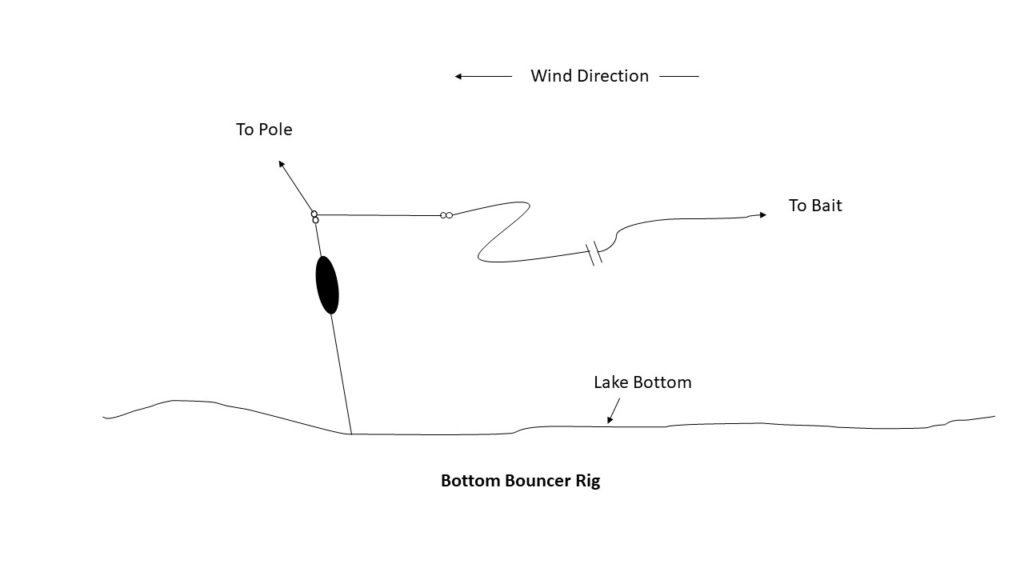
The weight is let down to the lake or river bottom and the line is adjusted so that the weight bounces off of the bottom with the wave action. The key to bottom bouncing is getting the right speed and action on the bait by adjusting the boat movement, weight of the bottom bounder and line angle to the water.
The Rods
The rods used for bottom bouncing need to have a stiff enough tip to handle the weight. The tip of the rod will tell you whether or not you are bouncing on the bottom. When a wave crest hits the boat, you want to see the rod tip load up and then abruptly unload as it lifts the weight/bait off of the bottom. Likewise as the boat falls into the wave trough, the rod tip should abruptly straighten, indicating that the weight has hit bottom. You can take in or let out more line to get this action just right. I have found that medium-action trolling rods for walleye work just fine for bottom bouncing. Ideally, the rods are placed in rod holders to keep the action consistent. This also allows you to use as many rods as you legally can, as long as your boat can accommodate them all.
The Bait
When it comes to the bait, most trolling baits will work. The bait of choice on the western basin of Lake Erie, however, is a nightcrawler harness rigged with a live nightcrawler. The bait can trail anywhere from 2-10 feet behind the bottom bouncer. This distance depends on how much action you want the harness to have. The shorter the lead is, the more action the bouncer will depart to the weight.
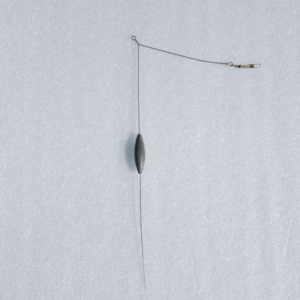
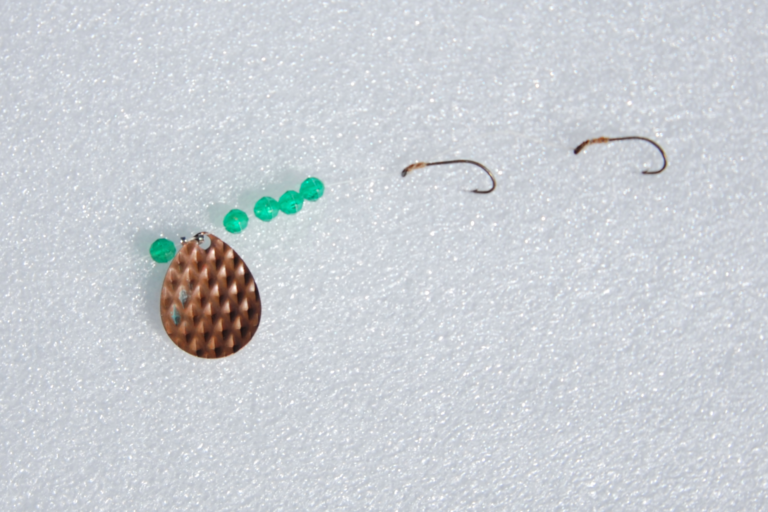
Walleye tend to school so once you’ve found some fish you can experiment with bait styles and colors until you find the combination of choice. This can vary day to day and sometimes even within the same day so don’t be afraid to change things up when the fish stop biting.
Speed
The best days are when the wind is blowing your boat in the 1-2 mph range. When this is the case, you likely won’t need any help from your boats motors or drift socks to dial in your speed because mother nature has done that work for you. However, not everyday is perfect and you may need a drift sock to slow you down a bit. If your drift speed is on the higher end, you also may need to use a heavier bottom bouncer to get the bait down to maintain good action. Likewise, if your rod bends too much prior to lifting the rig off of the bottom, you may want to go to a lighter bottom bouncer. A bit of wind and waves is essential and if the wind isn’t very strong (a rare day on Lake Erie) and you’re not going fast enough, it may be time to give up on bottom bouncing and start trolling.
Rod Placement
Each boat is different in terms of how it reacts to the waves and wind and how it is setup with rod holders. What works for one boat, might not be the winning recipe for another. The bottom line is that you want the baits to get the action you are looking for, while maximizing the number of lines in the water. For my 18′ boat, I like to turn the engine to one side. This will ensure that the boat turns to one side, allowing me to place rod holders along one side of the boat and off the back corners. With this setup, I can bounce 6-8 rods at a time.
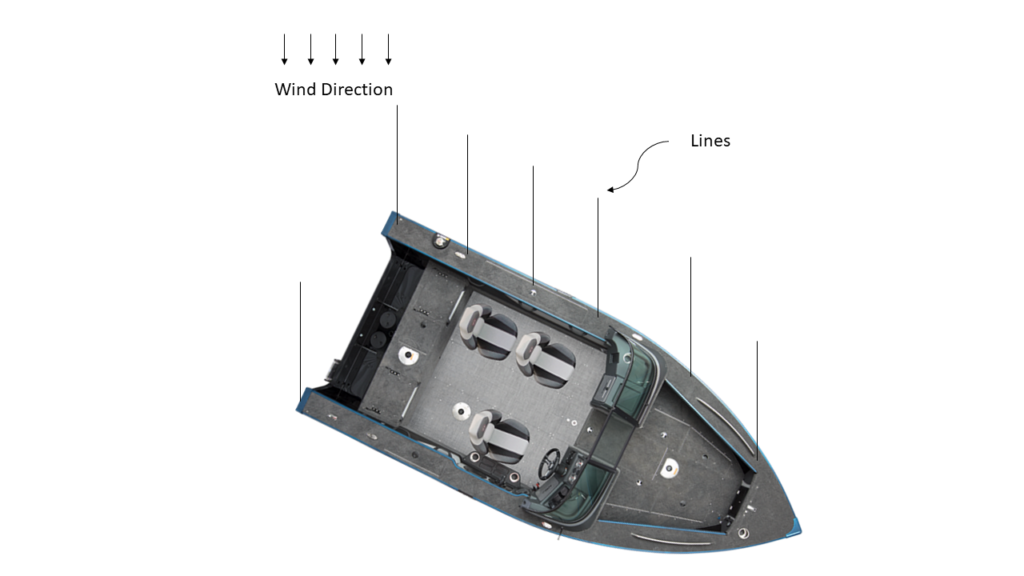
One of the best things about bottom bouncing is that once you get your lines set, it can be quite a relaxing way to fish. No boat to steer, no engine noise and no worries about line tangles. Just grab your favorite drink, sit back and wait for the bite!
